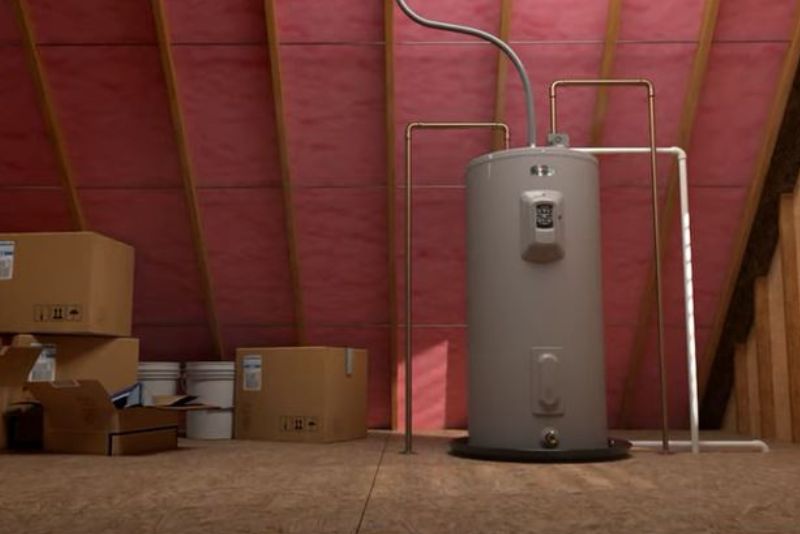The main reasons behind the Richmond water heater no hot water issue in the gas units are setting the thermostat too low, low gas pressure, too much hot water usage, the LED throwing error codes, thermocouple issues, faulty pressure switch, and a tripped combustion shutoff device.
The mode of operation in the tankless and electric units is slightly different. But you can still face the same issue with those units due to different reasons.
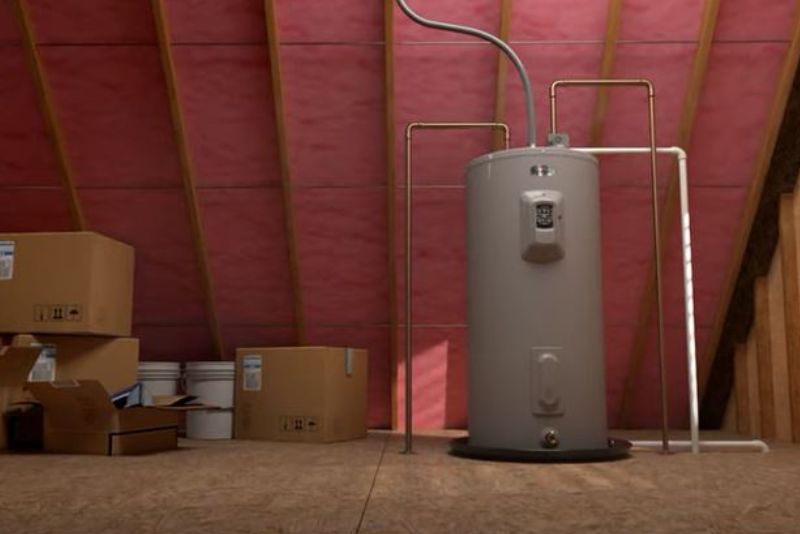
Keep reading this article to find out all about these issues in detail for all types of units along with their fixes. Without further ado, let’s dive in!
Richmond Water Heater No Hot Water [Why+ How To Fix]
Let’s start by discussing the main reasons behind the no-hot water problem in Richmond gas water heaters. Before delving deep into this topic, make sure that the power supply to the heater is turned on.
You don’t want to waste time diagnosing a complicated issue if you have simply forgotten to turn the heater on. With that said, here are the most common reasons why your Richmond water heater doesn’t heat water.
1. Setting The Thermostat Too Low
Checking the thermostat is one of the first things you should check if you are not getting enough hot water from your heater. Even if you didn’t change it or don’t have the habit of changing it, one of the other members of your house could have done it.
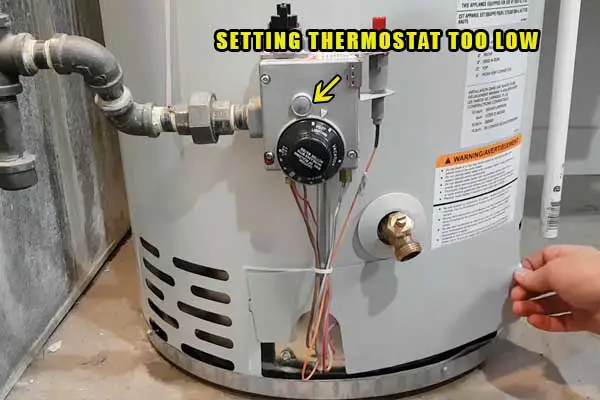
If the thermostat in the heater is set to a lower temperature, it’s obvious that you won’t be getting enough hot water from it. The heater is doing what it’s designed to do and gives you the water of your desired temperature as per the one set in the thermostat.
Solution:
You should be relieved if the no-hot water issue in your heater is caused by setting the thermostat too low. You won’t have to waste time calling mechanics or diagnosing a bigger issue. Just turn the thermostat back up to your desired temperature and that will solve the problem.
2. Low Gas Pressure
When there’s not enough gas pressure, the heater won’t be able to do its job properly. That’s why you may not be getting hot water from the heater. Make sure that the material you used for gas piping is clean and properly sized for your heater.
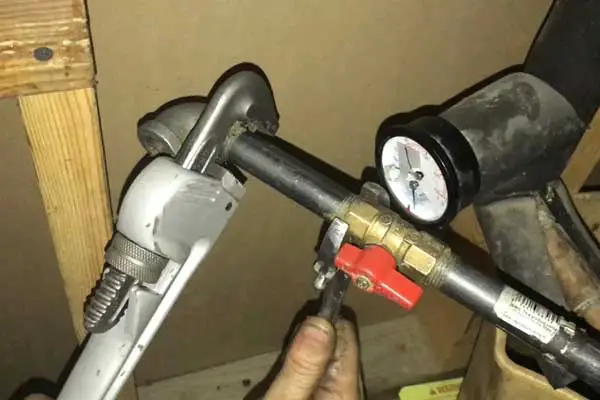
For Richmond heaters, the gas pressure should normally be around 14” w.c or a little less for both Liquid Propane and Natural Gas heaters. Check with a manometer and make sure that the gas pressure is within that range. If it’s too low or too high, that means your gas pressure isn’t at the right level.
Solution:
If you suspect that low gas pressure is causing the issue with your heater, there’s no need to panic. However, this problem isn’t something you should try solving on your own.
Call your local gas supplier and have them fix the gas pressure. You may have to change the gas pipes to solve this problem. Get it done as soon as you can to avoid a potentially hazardous situation.
3. Too Much Hot Water Usage
No matter which heater you are using, you need to remember to not push it beyond its capacity. When your hot water demands are more than the capacity of your water heater, it starts to fail. That’s why you won’t get sufficient hot water from it.

If you’ve left too many hot water faucets open at the same time, it can cause this issue. Even if there’s a leak in any of them, that can force your heater to work overtime and constantly give out hot water.
When you turn on another faucet at the same time, the heater can no longer heat hot water at both ends. And in that case, you face this no hot water issue from your faucet.
Solution:
First things first – make sure that you aren’t using too many hot water faucets at the same time. If any of them are leaking, you need to fix them and we’re confident that doing so should take care of this issue.
If there are no leaks, then simply waiting for the heater to recover and letting it restore to its natural state should do the trick. Next time, be realistic as to how much you can get out of your heater so that you don’t end up going through the same thing again.
Constantly overpowering your water heater can make it go bad ahead of time. So, use it within its limit to get the most use out of it.
4. LED Throwing Error Codes
There can be a wide number of reasons behind your Richmond gas water heater not giving out enough hot water. If your unit is equipped with an LED light, it can easily alert you to what’s causing the issue.
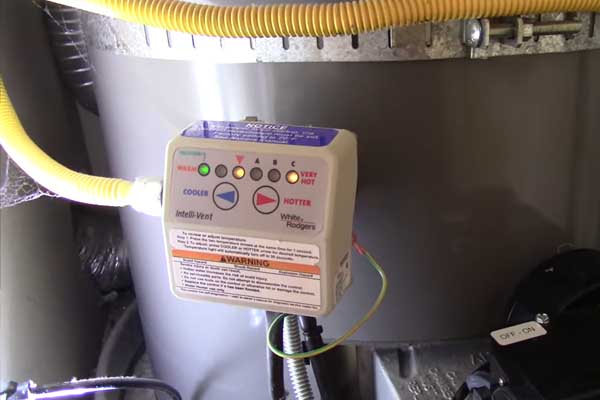
Refer to your owner’s manual to see what the LED error codes mean. It can indicate a range of issues starting from the pilot not being lit to other major problems in the heater including a faulty pressure switch or thermocouple.
Solution:
The approach to fixing the problem here will depend on the issue your LED light is pointing to. If the pilot light went out due to some reason, relighting it will fix the issue. If the issue is something else, you’ll have to act accordingly.
5. Thermocouple Issues
Problems with the thermocouple can keep the pilot from staying lit and could be the main reason why you aren’t getting any hot water from your water heater. There are many things that can go wrong with the thermocouple.
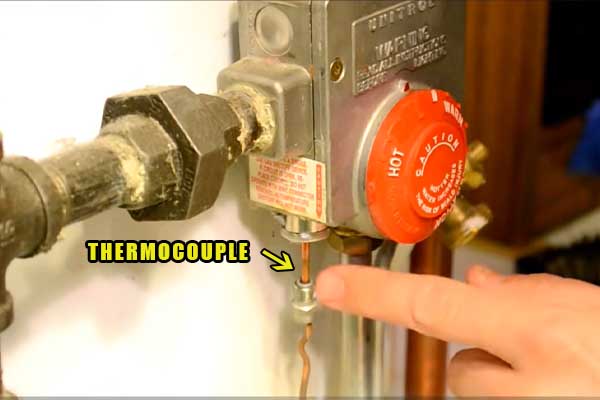
Under normal operation, the thermocouple senses the heat from the pilot light and allows the main burner to light up. But when the thermocouple loses the ability to sense the heat from the pilot light, it makes the pilot light go off and the main burner doesn’t come on.
More often than not, the thermocouple will either be bent, dirty or damaged when it causes this issue. Each of these problems has its own unique fix.
Solution:
When the thermocouple is bent and moves out of its original position, it can’t sense the flame from the pilot. This problem is most commonly seen in new heaters as the thermocouple can move during shipping. You just have to bend it back to the original position and this issue will be solved.
If the thermocouple is dirty, you can clean it and that will no longer interfere with the pilot staying lit. A dirty thermocouple can’t sense the flame from the pilot light. When you take it out and clean it, it’ll be able to recognize the flame and your heater will work properly.
The worst-case scenario is that the thermocouple is damaged. In that case, you only have one option and that is to replace the thermocouple with a new one. Thankfully, replacing the thermocouple is an easy job and you can do it on your own without the help of a mechanic.
It’s also a relatively inexpensive component. So, you won’t have to break the bank to replace it. You can check out our guide on why Richmond water heater pilot light won’t stay lit where we have broken down how to replace the thermocouple in nice and easy steps.
6. Faulty Pressure Switch
The pre-purge sequence of the heater starts when the control verifies that the pressure switch is open. If the blower motor is working properly, it’ll be energized and the pressure switch will be closed when the fan reaches its maximum speed.

The heater will go on to continue the ignition process during normal operation. But if the pressure switch is stuck open or closed, it will get in the way of the heater operating properly. The end result is that it may not work and therefore, you’ll not be getting any hot water from it.
Solution:
To know whether you have a faulty pressure switch or not, the first step is to locate it. Then, you can check it for continuity using a multimeter. If the pressure switch has gone bad, you have to replace it with a new one.
7. Tripped Combustion Shutoff Device
There is a combustion shutoff device in Richmond water heaters. It’s designed to shut off the heater whenever undesirable conditions of combustion take place in the heater.
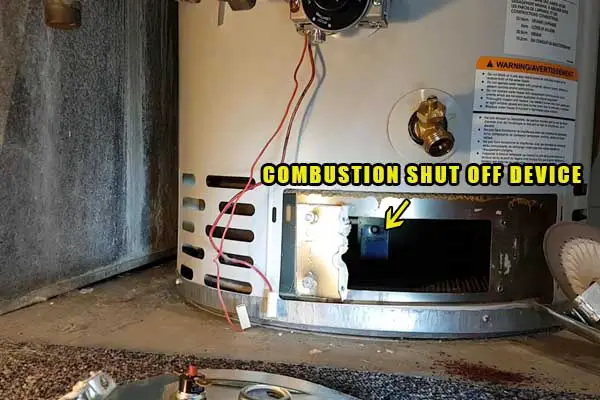
For example, the presence of flammable vapors or the combustion air inlet openings being blocked can lead to tripping the combustion shutoff device.
Solution:
As tripping the combustion shutoff device is a pretty serious issue, we don’t recommend that you try solving this problem on your own. Hire a qualified technician and have him deal with this one.
No Hot Water In Richmond Electric Water Heaters
Besides Richmond gas heaters, the electrical units can also present the same problem of not getting hot water. Some of the reasons behind not getting hot water from electric heaters are the same as their gas counterparts.
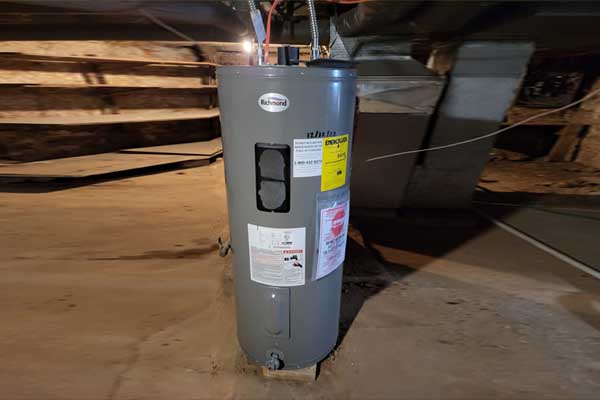
For instance, setting the thermostat too low will also cause electric heaters to not heat the water. If you have made that mistake, dial it up to the temperature you want to solve this issue.
With an electric heater, there are more things that can go wrong with the power supply of your heater. So, make sure you have a proper power supply to the heater. Start by making sure that the circuit breaker isn’t tripped and that no fuse leading to the heater is blown.
If you have a blown fuse, you need to replace it. If the circuit breaker of the heater was tripped to the Off position, change it back to the On position. The heater should be turned on. If the electric service to your house was interrupted, the heater won’t get power.
Rule that out by checking if any of the other electronics are working. If you have a power outage, call your local electric company to know you’ll have power again. This problem should be solved as soon as you have power. Sometimes, you may have to reset your heater as well. More on it later.
Apart from these issues, pushing your Richmond electric heater beyond its capacity can also make it not give enough hot water. Make sure that no hot water faucets are leaking.
If any of them are leaking, get them fixed to solve the issue. If multiple people are using the heater at the same time, then give the heater some time to recover and you’ll eventually get hot water from it.
Those were the mutual reasons that cause no hot water in both electric and gas water heaters. Now, let’s look at the additional issues that are unique to electric heaters. You need to be on the lookout for this issue.
01. Tripped ECO
The ECO or Emergency Cut-Off device is a safety mechanism built into electric heaters. It works by shutting off the power to the heater when the temperature of the water goes beyond a certain limit. Usually, that limit is 180°F.
It’s meant to protect the person using the heater from scalding. There are many things that can trigger the ECO. The most common ones include a power surge, changes in weather, a faulty thermostat, and shorted heating elements.
If the ECO wasn’t tripped due to a serious issue with the heater, you can fix the issue by simply resetting the heater. Follow these steps to reset the heater:
- Turn off the power to your Richmond electric heater by flipping the circuit breaker.
- Remove the cover of the upper heating element.
- Take out the insulation pad and set it aside.
- Press the red reset button.
- Put the heater back together and wait for a few hours to get hot water from the heater again.
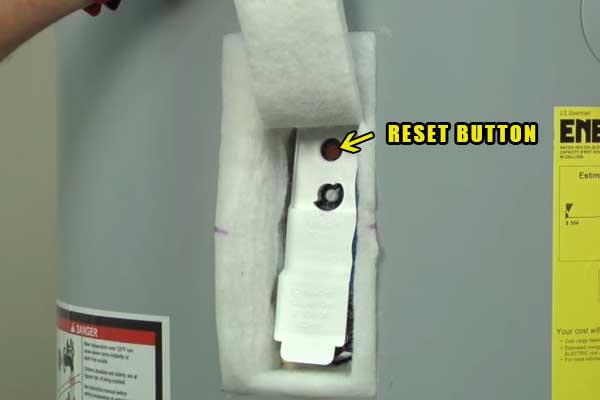
As you can see, resetting the heater is very easy. If you don’t get hot water after resetting the heater or the ECO gets tripped again, something is wrong with your heater. Check out our guide on how to reset Richmond water heater where we discuss these issues in detail and also present their solutions.
02. Loose Wiring
When installing the heater, the wiring needs to be set up correctly. Otherwise, the heater won’t work properly. Improper wiring is a common reason behind not getting hot water from Richmond electric heaters.

The wiring may have gotten loose and that can cause this issue. Unfortunately, rodents and insects can also mess with the wiring and that can also cause this problem.
We recommend hiring a qualified technician to help you out with the wiring issues. It can get pretty complicated to understand it and you won’t be able to fix it on your own unless you have expertise in this area.
03. Closed Auto Shutoff Valve
The auto shut-off valve is another safety device in Richmond heaters that are meant to shut the heater off if it detects a dangerous event like the flow of a dangerous liquid in the heater. Extreme fluctuations in the water pressure can also cause it to close.
Thankfully, it’s easy to restore your heater to its original condition. Follow these steps to do it:
- Turn off the power to the heater using the circuit breaker.
- Press and rotate the auto shutoff valve knob counterclockwise until it comes to a stop.
- The arrow of the valve should indicate that the valve is now open.
If the valve keeps tripping despite resetting it, then you may have an issue with the heater or even the water supply in your home. In that case, consult a qualified technician to help you diagnose and fix the issue.
No Hot Water In Richmond Tankless Water Heaters
Getting no hot water from your water heater is just as common in tankless units as it is in gas and electric ones. However, the reasons can vary a bit as the mode of operation is different. Before we get into the reasons unique to tankless heaters, let’s rule out the common issues in all types of heaters first.
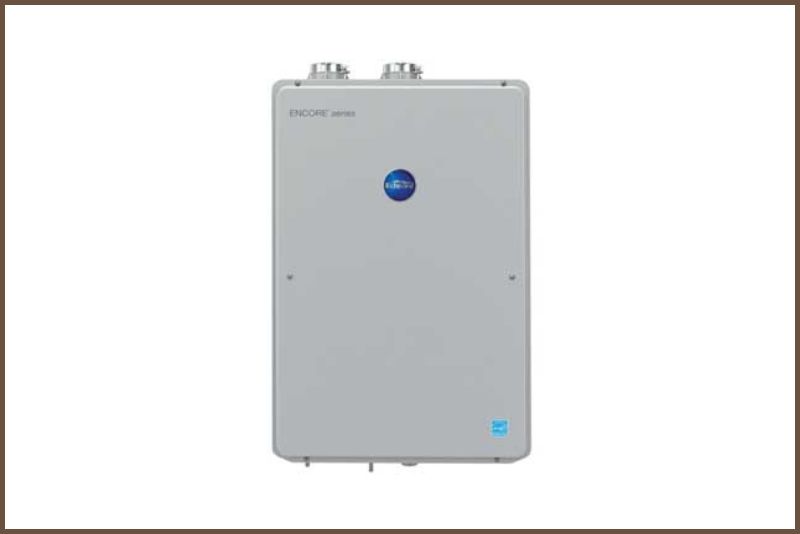
Make sure the tankless heater has power if you’re not getting hot water. If it’s turned off, press the power button to turn it back on. If you have set the temperature on the thermostat too low, you won’t get hot water. Make sure it’s set to the right temperature.
Now that we have addressed the common issues, it’s time to move on to the deeper issues with Richmond tankless water heaters that keep you from getting sufficient hot water.
01. Partially Opened Water Shut-off Valve
There’s a water shut-off valve installed near the cold inlet line of the water. It’s meant to make it easy for you to shut off the cold water supply whenever you want. This valve also helps in draining the water from the tankless heater when you want to remove the mineral buildup in it.
You may have forgotten to fully open the shut-off valve. You won’t get enough hot water from the heater unless you completely open the valve. So, check the valve and make sure you open it as much as possible to avoid this issue.
02. Not Fully Opening The Hot Water Faucet
Just like you need to ensure that the water shut-off valve is fully open, you need to do the same for the hot water faucet. If the hot water faucet isn’t fully open, the main burner of the heater goes off.
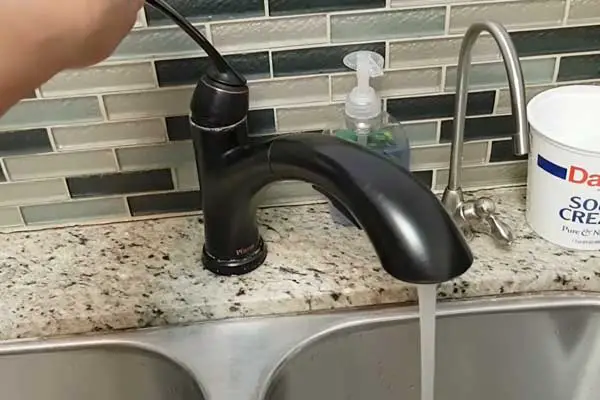
It does so as the incoming volume of the water is not enough to keep it burning. So, make sure the hot water faucets are fully opened if you want to get hot water from them.
03. Frozen Water Piping
If the surrounding temperature around your house is too low, it can also affect the piping. It’s not uncommon for the piping to be frozen during extremely cold weather. If your piping is already frozen, you need to let the pipes thaw and wait it out to get hot water again.
For those who don’t want to just sit back and relax, you can take a more proactive approach to solve this issue. You can open the cabinets under the sinks in your house to ensure proper airflow. Turn the faucet on and keep it dripping if the temperature drops to a freezing level.
You can even use a hair dryer or portable space heater around the frozen pipes to let them thaw more quickly. It’s also a good idea to use hot and damp towels on the pipes that are exposed.
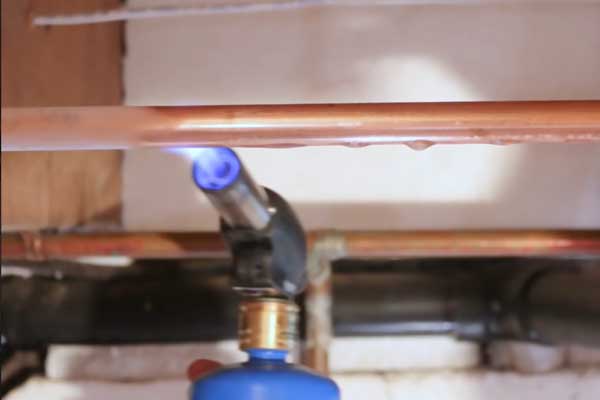
Dealing with frozen piping can be extremely annoying. Luckily, there are many steps you can take to keep your pipes from freezing in the first place. Here are some of the things you can do so that you don’t have to deal with this issue at all:
- Get your pipes insulated, especially, in areas where the pipes are unheated.
- Keep the cabinet doors open at all times to let warm air in and circulate through the pipes.
- Set the indoor temperature at a minimum of 55°F even if you go on a vacation.
- Let the faucets drip or trickle that is connected to the pipes that have a higher chance of freezing.
- Keep the garage doors closed if the pipes run through the garage.
04. Low Flow Rate
When there’s not enough hot water demand, the heater isn’t able to heat the water properly. Very little water passes through the heater at a time in this situation and that’s why the main burner doesn’t get properly activated.
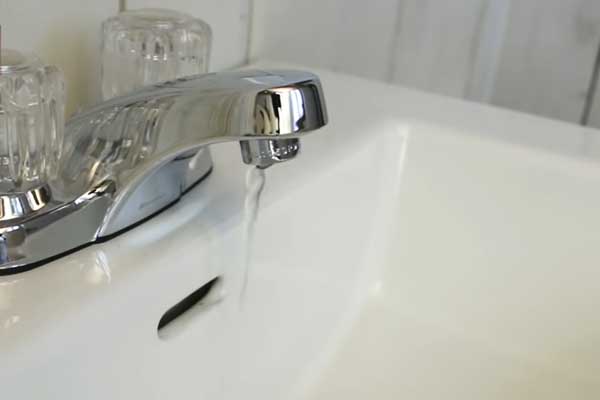
The output is that you don’t get hot water from your heater. This is a similar problem as not keeping the hot water faucet fully open. You may get a low flow rate even in the opposite of this situation when the demand for water is high.
It often leads to an issue called cold cold water sandwich. You get hot water followed by cold water and then, hot water again. If you notice this issue, especially, when multiple hot water faucets are being used in your house at the same time, it means you are pushing the heater beyond its limit.
The first solution here is to adjust the flow rate of the water supply in your house. But if the issue is caused by using multiple hot water faucets at the same time, you’ll have to cut back on it.
If limiting the hot water faucets is not an option, you can install an additional tank to store hot water and virtually increase the capacity of your water heater. It’ll also help you get hot water in an instant when you need it.
05. Dirty Water Filter
The water filter in your water heater makes sure that no dirty water passes through the heat exchanger. But with time, the water filter gets clogged due to the build-up of dirt and debris.
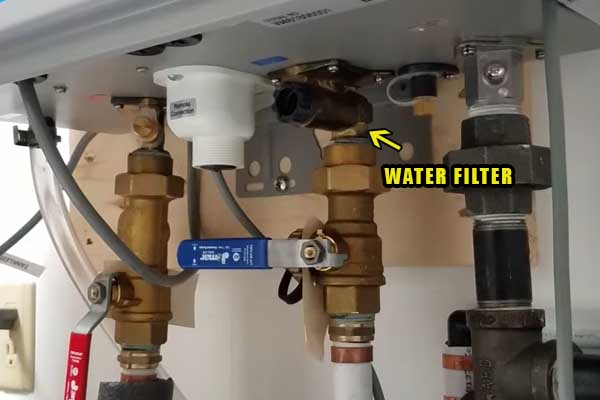
You won’t get enough hot water from your heater when you have a clogged water filter. It will limit the amount of water coming into the water heater and therefore, lead to less hot water.
Luckily, this problem has an easy solution. All you have to do is to take out the dirty water filter from your heater, clean it, and put it back in. It’s located at the base of the cold water line. Make sure you flush the heater before taking it out. It’s an easy process and you can do it yourself without any assistance.
06. Sediment Build Up In Heat Exchanger
If you live in an area with a hard water supply, sediment build-up will be your number one enemy. Calcium and Magnesium can accumulate in your heater’s heat exchanger and keep it from working efficiently.
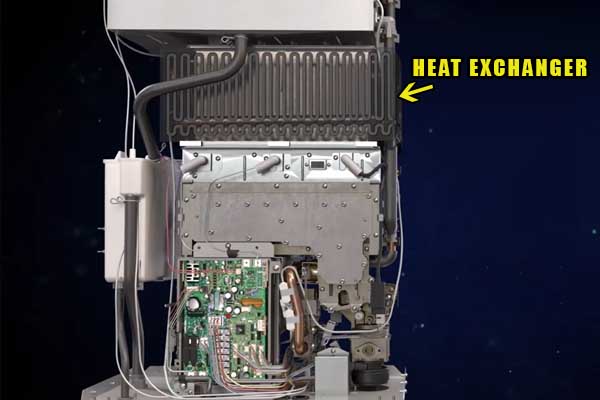
You’ll normally see the error code 88 pop up when your heater signals that it’s time to flush your tankless heater to remove the sediments from the heat exchanger. Draining the tank and recirculating clean water through the heater will take care of this issue in most cases.
Sometimes, you may also need to replace the water treatment filter if it has gotten too dirty. Your pipes can also get filled with sediments if you don’t have the habit of flushing your heater at regular intervals.
To keep this problem to a minimum, install a water softener in your house to combat the hard water. Make sure you flush your heater at least once a year to stay on top of things and prevent this issue from reappearing again. Doing so will also improve the lifespan of your Richmond water heater.
07. Heater Showing Error Codes
There can be a wide range of issues that can cause the no hot water issue in your heater. Luckily, you can look at the error codes and figure out what’s wrong with your heater.
Depending on the number displayed on the error code, you’ll know about the issue and the fix for your heater. For example, error code 05 means that the air intake or the vent exhaust opening could be blocked or the vent pipes aren’t connected properly.
In this particular case, you can solve the issue by removing the blockage from the air intake and vent exhaust. The air intake requires 12 inches of clearance around it. So, make sure it checks out. If the vent pipes aren’t connected well, consult a qualified technician for the job.
The other error codes will require other solutions. Look at your owner’s manual and go to the “Service Error Code Chart” page to figure out what each of the error code means and their fixes.
08. Clogged Aerator
Even a small thing like a fixture aerator can make you get no hot water. The aerator is connected to the tip of your faucet and it primarily has one job – ensuring that you get a constant supply of water without it splashing.
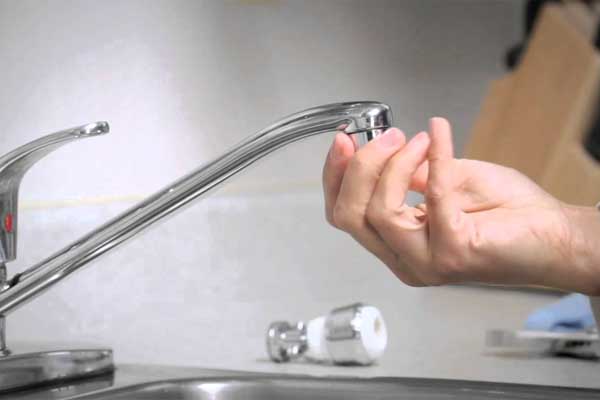
The aerators can also get clogged with time. Especially, if you live in an area where there is an excessive supply of hard water. When it gets clogged, hot water won’t be able to pass through it. Check if the aerator in your faucet is dirty and clean it if needed.
09. Faulty Mixing Valve
The job of the mixing valve is to mix hot and cold water to deliver tempered water. They’re often directly put in front of the hot water faucets so that tempered water can flow to the rest of the house.

Unfortunately, the mixing valves can go bad with time. When that happens, you will no longer get hot water from the heater properly. You can replace the faulty mixing valve to solve this problem.
10. Reversed Hot And Cold Water Lines
The final thing to look out for in our list is a common installation mistake. If the hot and cold water lines are reversed in your water heater, you won’t get hot water from the dedicated faucets.

You may be facing this issue if you just recently installed your heater. The solution is simple. Flip the lines again. That’ll set everything straight and back to normal. Now, you should get hot water from your heater.
FAQs:
Is it normal to get less hot water during colder months?
Yes, the temperature of the water going into the heater is lesser during these months. So, the heater takes longer to heat that water and you may get less hot water than you normally do during this time.
What is wrong when you have no hot water?
Plenty of things can be wrong with your heater that cause no hot water. Start by eliminating the obvious issues by making sure that your heater has power and you have set the thermostat to the right temperature.
Where is the Richmond water heater reset button?
The reset button is located behind the insulation pad of the upper heating element cover in the Richmond electric units. No such reset button is present in the tankless and gas units.
What does it mean if my electric heater is leaking water?
Your heater leaking water is never a good sign. It means that you’ll have to most likely replace your heater as the current unit you’re using is done for.
Conclusion
Getting no hot water after turning on a hot water faucet can be one of the worst experiences you have as a homeowner. Especially, when you turn on the shower in cold weather and you’re left with a chill in your body.
What causes Richmond water heater no hot water? Hopefully, you fully know the answer to this question after completing this guide. Take your time to diagnose and fix the issue. Comment below to let us what turned out to cause the problem with your Richmond heater and how you fixed it.
